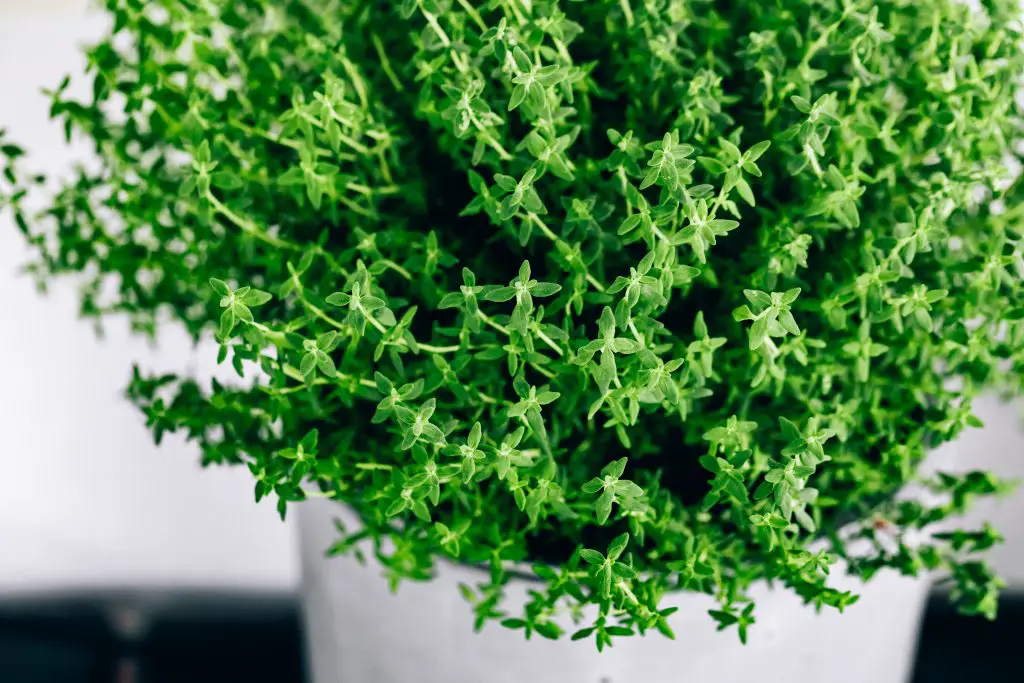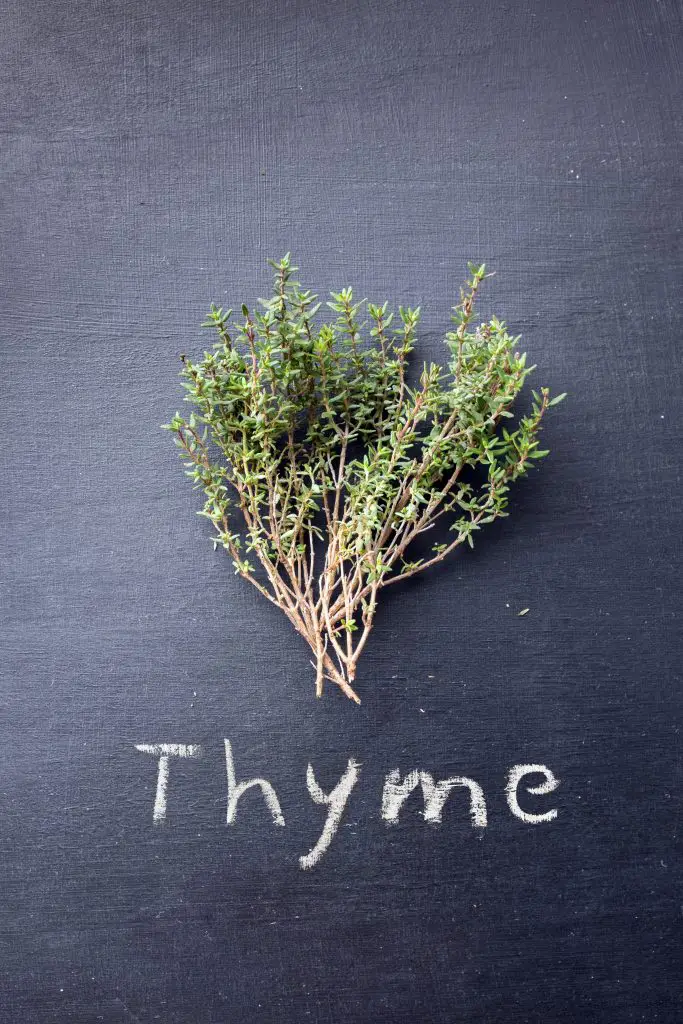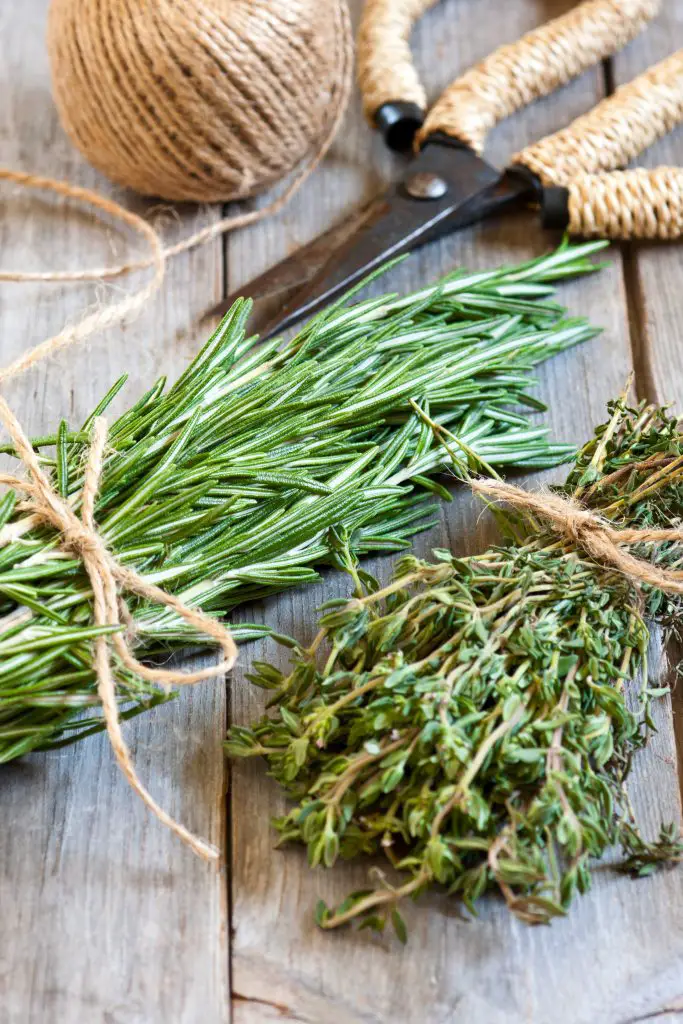Thyme is a great herb to grow especially for beginners. It doesn´t need much attention or care and it will grow quite fast once it is established.
Thyme comes in a lot of different variants (over forty to be precise) but most variants need pretty much the same soil, attention, and care as regular thyme. So you can follow this guide regardless of your thyme variant and you will be just fine.
Thyme
Thyme is an evergreen herb in the mint family. Thyme is mostly used as a culinary herb.


Sunlight
Full or partial sun.

When to Plant
Plant in March, April, May, September, October, or November.

Temperature
A ground temperature of at least 70°F.

Soil
Loamy sandy soil that drains well.

Soil PH
Between 5.0 and 8.0.

Planting
Space young plants at least 12 inches apart from each other.

Pruning
Prune regularly and remove flowers to encourage regrowth.

Watering
Water every 2 weeks. Thyme likes it dry.

Pests
Most commonly get fungal diseases because of overwatering.
How to Grow Thyme
Thyme is originally from the Mediterrane area in Italy, which makes this herb quite drought-resistant and you don´t need to water it often.
Thyme can also survive the winter without any issues or huge preparations.
All of that makes thyme the perfect plant for beginners who want to grow their own herbs.
Preparing the Soil
You need well-draining loamy or sandy soil with a PH between 5.0 and 8.0 for growing thyme.
Thyme likes it hot and sunny so choose a nice sunny spot in your garden to plant it. If you want to grow thyme in a pot, choose a nice sunny spot near the window.
You can mix the soil with some sandy soil to ensure that it will drain well but most well-draining loamy soil is more than good enough for growing thyme.
As I already stated before in this article, Thyme is pretty easy to grow and the plant is not picky at all.
The only thing Thyme absolutely doesn´t like is “wet feet”. Which is the main reason why using well-draining soil to grow Thyme is so important.
Planting
Thyme can be planted from March to May or from September to November.
I usually like to plant Thyme in the spring (so either in March, April, or May) to ensure that the plant can develop a strong root system and collect enough energy to survive the winter without any problems.
If you are living in an area where the winter is not as cold, however, then you can plant thyme in Autumn as well and it will survive and prosper in the next year without any issues.
It is hard to plant Thyme from seeds so I recommend buying young plants and planting them directly into the soil.

Plants should be spaced at least 12 inches apart when planting. They can be separated further if they grow too close to each other.
Once you planted the Thyme, make sure to water them thoroughly to ensure that they get established properly.
How to Care for Thyme
Thyme is pretty easy to grow and you will probably also like to hear that Thyme is very easy to care for.
Thyme really only needs some pruning every now and then and some water every two weeks until winter.
Watering Thyme
Thyme generally doesn´t need a lot of water to thrive.
It originates from the Mediterrane area in Italy which means they are used to hot dry weather and sandy soil.
But you still need to water it every now and then. I recommend watering Thyme every two weeks to a depth of around one inch.
Don´t overwater the plant and make sure that access water can drain.
Thyme is very sensitive to water and wet roots should generally be avoided as it can lead to fungus or root rot.
How to Prune Thyme
Thyme needs to be pruned regularly or it will get too woody and won´t taste good anymore. Luckily you really only need to prune thyme in the spring or when you seed flower bulbs forming.
When pruning you should cut the plant back about 1/3 of its current height to make sure that it grows nice and bushy and won´t get woody too quickly.
Cut any flower bulbs that you see to ensure that the thyme keeps its flavor and won´t grow too high too quickly.
You can let some flowers bloom if you want to but I generally cut any flowers until the very end of the season to make sure that I can use as much of the Thyme as possible.
How to Fertalize Thyme
Thyme is a very robust plant that doesn´t need much to thrive. I never fertilize my Thyme and it continues to grow healthy.
You can fertilize thyme with some 10-10-10 fertilizer in spring if you feel like the plant needs it.
If the green looks a bit dull, the plant won´t grow as well anymore, or if the plant has problems growing healthy leaves then it should be fertilized.
My Thyme is growing outside so it doesn´t have to be fertilized much or at all but if you grow your Thyme in a pot then you might have to fertilize it once every two years to ensure that it gets all the necessary nutrients to continue growing healthy.
Pests and Diseases
Thyme is pretty resistant to most pests. Even snails don´t like Thyme all that much but thyme is quite sensible to “wet feet”.
So you have to make sure that it never gets too much water by making sure that the water can always drain properly.
If the roots of the plant are in contact with water for longer periods of time then Thyme might get root rot or Fungi.
To combat root rot you have to carefully dig the plant out. Then prune any rotted roots from the plant and use a fungicide to get rid of any fungi that might be on the healthy roots. Then remove the soil and replace it with loamy well-draining soil that is dry.
Plant the Thyme into the new soil and make sure to only slightly water it.
How to Harvest Thyme

Harvesting Thyme is pretty easy. You can harvest Thyme year round even in the Winter.
The only time that Thyme should not be harvested is when it is blooming as blooming Thyme will have a bitter taste to it.
To harvest Thyme simply plug as many young twigs from the top of the plant as you need.
And that is pretty much it. Simply avoid thicker twigs because they tend to be woody and don´t taste as good.
How to Store Thyme Properly

Thyme can be dried and frozen in order to store it.
However, because you can harvest thyme year-round you rarely need to store it in the first place.
If you want to dry it simply bind the harvested twigs together and hang them from the ceiling for a month. Make sure that they hang in an area that is dry and has at least room temperature.
After a month the twigs will be dry and can be ground or simply stored in a glass or a plastic container for later use.
If you want to freeze your Thyme harvest then simply put the harvested twigs in a plastic container and put them in the freezer.
It is as simple as that.
